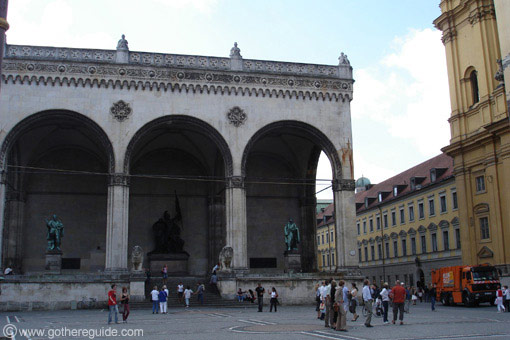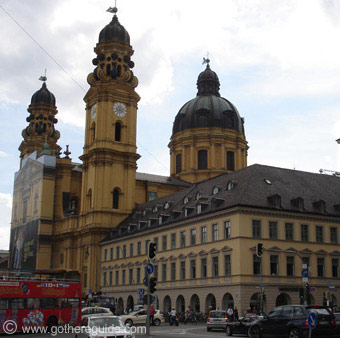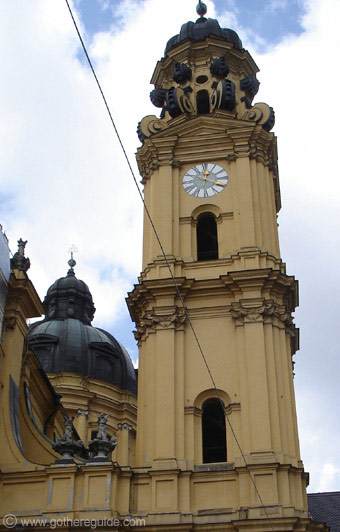
Odeonsplatz - Odeonsplatz information and pictures
| Tweet |
A Brief History
The area where the square sits was previously located outside the city walls, before the fortifications of Munich were demolished in the 18th century. Leo von Klenze was commissioned by Ludwig I to design and build the square in 1816. To this purpose, the Schwabinger that dominated the walls of the city was demolished. Ludwig wanted to turn the square into the gateway to Munich and the road that would lead to the outside districts.
Odeon is the name of the Concert Hall that Leo von Klenze built in the period 1826 - 1828. The concert hall was damaged during the Second World War and remade into a government building. The square was also named Odeon.
Feldherrnhalle is the most outstanding building at Odeonsplatz (the word stands for Field Marshal's Hall in English). The edifice was designed by Friedrich von Gurtner in 1841 on the request of Ludwig who wanted to construct a hall in honor of his generals. The structure, including the Theatinerkirche, give an Italian look to the square. The hall has three arches, with the central one fitted with a staircase that leads to the entrance. A pair of Bayern lions is depicted on the entrance. One curious fact – on these steps in 1923 Hitler clashed with the police and was then sent to prison where he wrote Mein Kampf – (My Fight).
Hofgarten is a garden situated to the east of the square and created between 1613 and 1617, when Maximilian I was the sovereign leader of Bavaria. In fact, the parkland is a Renaissance court garden with Italian garden motifs, featuring a temple with a dome and a bronze structure, a symbol of Bavaria.
The Theatinerkirche or Theatiner Church is a copper-domed house of worship, situated at the west side of the square. The edifice was constructed in the Italian baroque style - an architectural design employed in the building of some churches in Rome. The structure was rebuilt by Agostino Barelli, and reconstruction works took place from 1633 to 1669. Enrico Zucalli took over the construction until the dome was finished in 1690.
As a famous attraction in Munich, Odeonsplatz attracts hundreds of thousands of local and foreign tourists, contributing to the economic growth of the city.



Theatinerkirche closer look at the clock tower
Where is Odeonsplatz: Odeonsplatz
How to get to Odeonsplatz: U-bahn U3,U4,U5,U6: Odeonsplatz
Please help us build a better site. Add your comments about Odeonsplatz here.

Munich Attractions
Copyright © GoThereGuide.com 2015
All rights reserved.
All rights reserved.
User Comments about Odeonsplatz